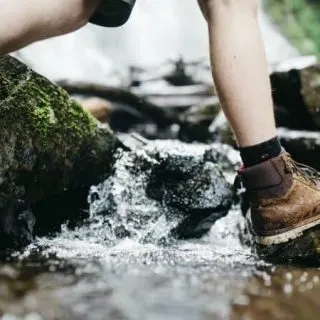Hiking boots cost a pretty penny, and chances are you probably own just one pair. When you are on a camping trip or if you like hiking, this can be a bit of a hindrance. The reason being your feet tend to sweat when hiking. This means you will most definitely have sweat-soaked hiking boots at the end of your hike. So what happens when you want to go on a hike the next day?
Using a Boot Dryer
A boot dryer will dry the boots using heat. This option work if you have access to electricity. It is the fastest way to dry wet boots. You can use the boots dryer for drying hiking boots overnight. Ensure the heat produces is warm to avoid damaging the leather or material used to make the boots.
Using Newspapers
this is another commonly used method of drying boots. Crumple old newspapers and insert them in your boots. Leave them overnight to soak up all the water in the boots. You may need to change them a couple of times, depending on how wet the boots are.
Using the Camp Fire
Your options may be limited in the field, but it is still possible to dry your boots when you have access to a campfire. Place them a short distance from the fire to prevent them from getting too heated, which may damage the material used or the adhesive binding the boot upper to the sole. This is ideal if you are out on a long trek.
Using a Shamee or an Absorbent Towel
Shamees are very absorbent and are a good option for absorbing water in the hiking boots. Use them to soak up the water drying boots in over.
Using Rice
If you have rice to spare, you can use it to absorb the water from the hiking boots. There a reason why they use rice to dry cell phones. Pour the rice into the hiking boots and let it stay overnight.
How To Dry Hiking Boots In The Field
Your best bet when out in the field would be to use a campfire or old newspapers. You can also use rice as it is very absorbent, making it a fast-drying agent. You can also buy heating pads or commercial made boots drying inserts.
Drying hiking boots is essential as it helps to preserve them, increasing their life span. It will also prevent the growth of bacteria, fungi, mold, or mildew in your boots.

